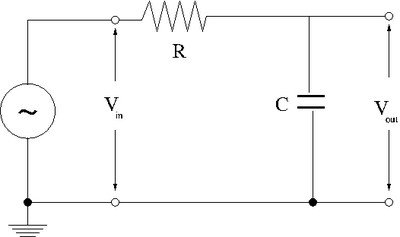Difference between revisions of "Lab 2 RS"
Jump to navigation
Jump to search
| Line 1: | Line 1: | ||
| + | [https://wiki.iac.isu.edu/index.php/Electronics_RS Go Back to All Lab Reports] | ||
| + | |||
;RC Low-pass filter | ;RC Low-pass filter | ||
| Line 51: | Line 53: | ||
[[Forest_Electronic_Instrumentation_and_Measurement]] | [[Forest_Electronic_Instrumentation_and_Measurement]] | ||
| + | |||
| + | [https://wiki.iac.isu.edu/index.php/Electronics_RS Go Back to All Lab Reports] | ||
Revision as of 16:39, 21 January 2011
- RC Low-pass filter
1-50 kHz filter (20 pnts)
- Design a low-pass RC filter with a break point between 1-50 kHz. The break point is the frequency at which the filter starts to attenuate the AC signal. For a Low pass filter, AC signals with a frequency above 1-50 kHz will start to be attenuated (not passed).
- Now construct the circuit using a non-polar capacitor.
- use a sinusoidal variable frequency oscillator to provide an input voltage to your filter.
- Measure the input and output voltages for at least 8 different frequencies which span the frequency range from 1 Hz to 1 MHz.
| Hz | Volts | Volts | |
- Graph the -vs-
phase shift (10 pnts)
- measure the phase shift between and as a function of frequency . Hint: you could use as an external trigger and measure the time until reaches a max on the scope .
Questions
- compare the theoretical and experimentally measured break frequencies. (5 pnts)
- Calculate and expression for as a function of , , and . The Gain is defined as the ratio of to .(5 pnts)
- Sketch the phasor diagram for ,, , and . Put the current along the real voltage axis. (30 pnts)
- Compare the theoretical and experimental value for the phase shift . (5 pnts)
- what is the phase shift for a DC input and a very-high frequency input?(5 pnts)
- calculate and expression for the phase shift as a function of , , and graph -vs . (20 pnts)
